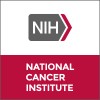
Mitoxantrone Hydrochloride Liposome Combined With Chemotherapy in Untreated de Novo Acute Myeloid...
Acute Myeloid LeukemiaThe purpose of this study is to determine the safety, efficacy and pharmacokinetics of mitoxantrone hydrochloride liposome injection combined with chemotherapy in previously untreated de novo acute myeloid leukemia.

Understanding Chronic Lymphocytic Leukemia
Chronic Lymphocytic LeukemiaThe purpose of this study is to collect human Chronic Lymphocytic Leukemia tissue samples and medical information, in order to find out more about the causes and biology of chronic lymphocytic leukemia.

The Acute Promyelocytic Leukaemia Asian Consortium (APL-AC) Project
Acute Promyelocytic LeukemiaThere is currently lack of collaborative data on the epidemiology, clinicopathologic features and treatment outcome of newly diagnosed and relapsed APL in Asia. In addition, there is lack of data comparing oral- As2O3-based regimens with other treatment approaches, including intravenous As2O3,in the frontline or relapsed setting. With the long-term data of oral-As2O3 based regimen for APL available from Hong Kong, retrospective and prospective comparison with other treatment approaches in other Asian countries will generate important information to pave the way for widespread application of oral-As2O3 outside Hong Kong.

Observational Study Relapsed or Refractory Chronic Lymphocytic Leukemia Venetoclax-based Regimens...
Chronic Lymphocytic LeukemiaRelapse Leukemia1 moreObservational study aimed at describing the characteristics and outcome of CLL patients who started treatment with venetoclax-based regimens according to the local label outside clinical trials in Italy in a period of time ranging from the start of the Venetoclax Named Patient Program (March 2016) until October 31st, 2021.

A Treatment Protocol for Participants 0-45 Years With Acute Lymphoblastic Leukaemia
LeukemiaAcute LymphoblasticThe pilot study collects the experience of previously successful treatment of infants, children and young adults, with ALL from a number of well-renowned study groups into a new platform protocol, which is both a comprehensive system for stratification and treatment of ALL in this age-group as well as the basis for several randomised trials included in the study-design. The pilot study is implemented as a master protocol without study specific interventions, thus as an observational study. The pilot study is for countries/study-groups who intend to join ALLTogether1 (including experimental interventions). For these countries the pilot study is crucial to optimise diagnostics, registration systems, collaborations with vendors, logistics and data-checks before starting the main study. The study only includes "standard of care" treatment included in the master protocol.

Evaluation of a Cardiovascular Active Prevention in Chronic Myeloid Leukemia on the Cardiovascular...
Chronic Myeloid Leukemia (CML)According to the French National Cancer Institute, 35 000 new hematologic cancers are observed in France representing 10% of the new cancers. Chronic Myeloid Leukemia (CML) is a cancer involving the bone marrow and blood cells, the median age at diagnosis is 53 years in the Western world. The prognosis is worse than many other cancers with net survival at 5 years of 26%. Since the approval of imatinib, additional tyrosine kinase inhibitors (TKIs) have been approved by the European Medicine Agency, including the second-generation TKIs nilotinib, dasatinib, and bosutinib and the third-generation TKI ponatinib. Despite their effect on the evolution of CML, there is increasing of cardiovascular toxicities which can impact patient morbidity and mortality. The majority of the cardiovascular toxicities are associated with the second- and third-generation TKIs. Nilotinib and ponatinib cardiovascular toxicity including arterial and venous thromboembolism has decrease the benefit/risk ratio, 10% of patients treated with nilotinib 300 mg twice daily and 15.9% treated with 400 mg twice daily experienced a vascular complication including myocardial infarction /ischemic heart disease, cerebrovascular accidents, or peripheral arterial disease. Regarding ponatinib, serious arterial occlusive adverse reactions occurred in 19% of patients. In an attempt to reduce major adverse cardiovascular events MACE due to nilotinib and ponatinib, currently, then approach is driven by usual clinical practice without any robust published evidence. The investigators aim to perform a national clinical trial, multicenter, prospective, randomized, with two parallel comparative arms: experimental group with cardiovascular active prevention vs non active cardiovascular active prevention based on usual clinical practice. Our hypothesis is that active prevention of cardiovascular toxicities with optimal medical treatment improves the benefit-risk ratio in CML patients. The primary objective is Event Free Survival (EFS) at month 24.

Haploidentical Peripheral Blood Stem Cell Transplantation for Acute Leukemia
Acute LeukemiaAllogeneic stem cell transplantation (Allo-HSCT) is the effective and even the only treatment for hematological malignancies. The "GIAC" protocol established by our center has successfully crossed the HLA barrier in HLA-mismatched/haploidentical HSCT. The protocol entails the following: treating donors with granulocyte colony-stimulating factor (G-CSF) to induce donor immune tolerance, intensified immunologic suppression to both promote engraftment and to prevent GVHD, antithymocyte globulin (ATG) was included for the prophylaxis of GVHD and graft rejection, and combination of G-CSF-primed bone marrow harvest (G-BM) and G-CSF-mobilized peripheral blood stem cell harvest (G-PB) as the source of stem cell grafts. But peripheral blood transplantation is still prevalent. Compared with BM, G-PB is more convenient to collect, and the number of T lymphocytes and CD34+ cells is higher. It is reported that G-PB has a higher implantation rate and even a higher disease-free survival rate in sibiling-identical transplantation compared with BM transplantation, whereas there were also reports with different conclusions. This prospective, one-arm clinical cohort study aims to evaluate the safety and efficacy of haplotype peripheral blood stem cell transplantation (PBSCT) in the treatment of acute leukemia.

TAK-243 in Treating Patients With Relapsed or Refractory Acute Myeloid Leukemia or Refractory Myelodysplastic...
Myelodysplastic SyndromeRecurrent Acute Myeloid Leukemia3 moreThis phase I trial studies the side effects and best dose of TAK-243 in treating patients with acute myeloid leukemia, or myelodysplastic syndrome, or chronic myelomonocytic leukemia that has come back or that is not responding to treatment. TAK-243 may stop the growth of cancer cells by blocking some of the enzymes needed for cell growth.

CD34+ Transplants for Leukemia and Lymphoma
LeukemiaMyeloid4 moreThis study will evaluate whether processing blood stem cell transplants using an investigational device (the CliniMACS system) results in less complications for patients undergoing transplant for treatment of a blood malignancy (cancer) or blood disorder.

Testing the Use of Combination Therapy in Patients With Persistent Low Level Acute Myeloid Leukemia...
Acute Myeloid LeukemiaAcute Myeloid Leukemia Arising From Previous Myelodysplastic Syndrome3 moreThis phase II MyeloMATCH treatment trial compares cytarabine versus (vs.) cytarabine and venetoclax vs. liposome-encapsulated daunorubicin-cytarabine and venetoclax vs. azacitidine and venetoclax for treating patients who have residual disease after treatment for acute myeloid leukemia (AML). Cytarabine is in a class of medications called antimetabolites. It works by slowing or stopping the growth of cancer cells in the body. Venetoclax is in a class of medications called B-cell lymphoma-2 (BCL-2) inhibitors. It may stop the growth of cancer cells by blocking Bcl-2, a protein needed for cancer cell survival. Liposome-encapsulated daunorubicin-cytarabine is a drug formulation that delivers daunorubicin and cytarabine in small spheres called liposomes, which may make the drugs safer or more effective. Azacitidine is a drug that interacts with DNA and leads to the activation of tumor suppressor genes, which are genes that help control cell growth. This study may help the study doctors find out if the different drug combinations are equally effective to the usual approach of cytarabine alone while requiring a shorter duration of treatment. To decide if they are better, the study doctors will be looking to see if the study drugs lead to a higher percentage of patients achieving a deeper remission compared to cytarabine alone.
